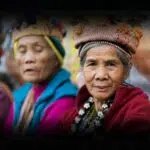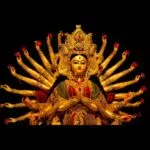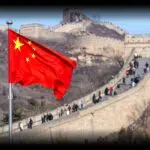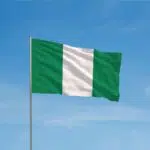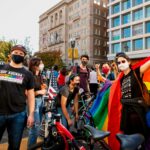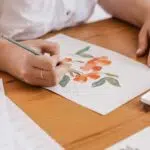National Indigenous Peoples month in October is a Philippine observance that aims to support and raise awareness of indigenous cultural communities. It is hoped that more Filipinos will be aware of the numerous contributions of National Indigenous Peoples Month. Indigenous peoples make up at least 10% of the total population in developing countries such as Southeast Asia. The Philippines alone has over 50 distinct indigenous cultural communities that inhabit the archipelago’s lands. These Indigenous peoples are well known for their rich artistic and cultural heritage, expertise in specific occupations, and mastery of the land that has sustained them for centuries.
History of National Indigenous Peoples Month
Indigenous people are traditional communities that have continuously occupied the land they live on and whose histories predate the arrival of the Spaniards in 1521. The Moro people of Mindanao, the Lumad people, the Kalinga people, Tagalogs, Ilocanos, Igorot, Bikolons, Aetas, and Agta are among these communities. Before becoming fishermen and rice farmers, their forefathers were hunter-gatherers and agriculturalists.
The indigenous cultural communities of the Philippines have a long history of struggle for their rights, ancestral domains, and autonomy. The indigenous people of the Philippines have responded to outside oppression with a variety of movements and responses over the last 100 years. This period culminated in Spanish “civilizing” missions that attempted to destroy or eliminate local cultures through forced conversions, assimilation, and transformation.
The initial reaction was one of defiance. Indigenous peoples fought alongside Filipinos of Spanish descent in the Philippine revolution against Spain. However, following independence from Spain in 1898, the Filipino upper class excluded indigenous people from its definition of “Filipino people.” Instead, they only considered Filipinos of Spanish ancestry and culture. As a result, indigenous peoples are still subjected to oppression and discrimination.
In recent years, some indigenous groups have reawakened the need to reclaim their birth rights and autonomy as distinct peoples within the Philippine nation-state. Indigenous Peoples’ Movements: Past and Present provide a historical overview of these struggles to reestablish indigenous identity and autonomy throughout history.
National Indigenous Peoples Month timeline
Ferdinand Magellan arrives in the Philippines, marking the beginning of the Spanish colonial period.
Emilio Aguinaldo declares the Philippines independent from Spain and announces himself as president.
The United Nations uses the word ‘indigenous’ officially.
President Gloria Macapagal-Arroyo issues Proclamation No. 1906, designating October as the month to honor indigenous peoples' contributions to the country and to promote their welfare and cultural rights.
National Indigenous Peoples Month FAQs
Who belongs to the indigenous people of the Philippines?
The Igorot, the Lumad and the Mangyan. However, an official figure for the Indigenous Peoples of the Philippines has yet to arrive. It is estimated that the country’s indigenous population is between 10% and 20% of the national population, which currently stands at around 102.9 million.
How many indigenous tribes are there in the Philippines
The Philippines is a culturally diverse country with an estimated 14 to 17 million indigenous peoples belonging to 110 ethnolinguistic groups.
What do you call the natives of the Philippines?
Filipinos or Mga Pilipino are the people who are citizens of or native to the Philippines.
How to Observe National Indigenous Peoples Month
Donate to indigenous activists and groups
During this National Indigenous Peoples Month, you can support them with a donation. I will help to fund grassroots mobilizations for environmental justice for indigenous communities worldwide.
Bake some indigenous eats with the family
With so many different types of indigenous foods to bake, this task is not only enjoyable but also educational. Depending on the ingredients available and the age of your child, you could try baking 'puto' (rice cake), 'bibingka' (rice cake with coconut and carabao cheese), or 'kakanin' (rice cake with coconut and carabao cheese) (rice cakes including Biko and Suman). Many recipes can be found online.
Participate in events hosted by indigenous people
Attending and participating in various events organized by indigenous communities will be an excellent way to learn more about our indigenous brothers and sisters. Have your family and friends tag along if they wish — the more, the merrier!
5 Interesting Facts About Indigenous People
370 million indigenous people
You may have never thought about it, but more than 370 million native people live on this planet in 90 countries.
They experience more violations
UNESCO says that indigenous peoples experience more violations of their rights today than they did ten years ago.
Inhabiting approximately 22% of the world's land
Indigenous people occupy a significant portion of the world's land surface, and they are thought to live in harmony with 80% of Earth's plant and animal species.
5,000 communities
Around the world, there exist approximately 5,000 indigenous communities that speak 4,000 different languages.
15% of the world's extremely poor
Despite constituting only 5% of the global population, indigenous peoples account for 15% of the world's extremely poor.
Why National Indigenous Peoples Month is Important
Indigenous cultures matter
It is important to observe the indigenous peoples of the Philippines because their cultures matter. They have a lot to contribute to the cultural diversity of Filipino society. Many indigenous Filipinos are farmers and fisherfolk. They protect their ancestral domains from illegal logging and mining activities that destroy the environment.
Overseeing the latest issues of indigenous peoples
This month is also a time to take stock of the continuing challenges and opportunities for indigenous peoples in their country. This includes problems that have been brought about recently.
It educates us about their culture
Through various activities and programs, the indigenous people will share their culture and tradition with us. We can learn more about them and how much they have contributed to our nation's growth.
National Indigenous Peoples Month dates
| Year | Date | Day |
|---|---|---|
| 2025 | October 1 | Wednesday |
| 2026 | October 1 | Thursday |
| 2027 | October 1 | Friday |
| 2028 | October 1 | Sunday |
| 2029 | October 1 | Monday |

